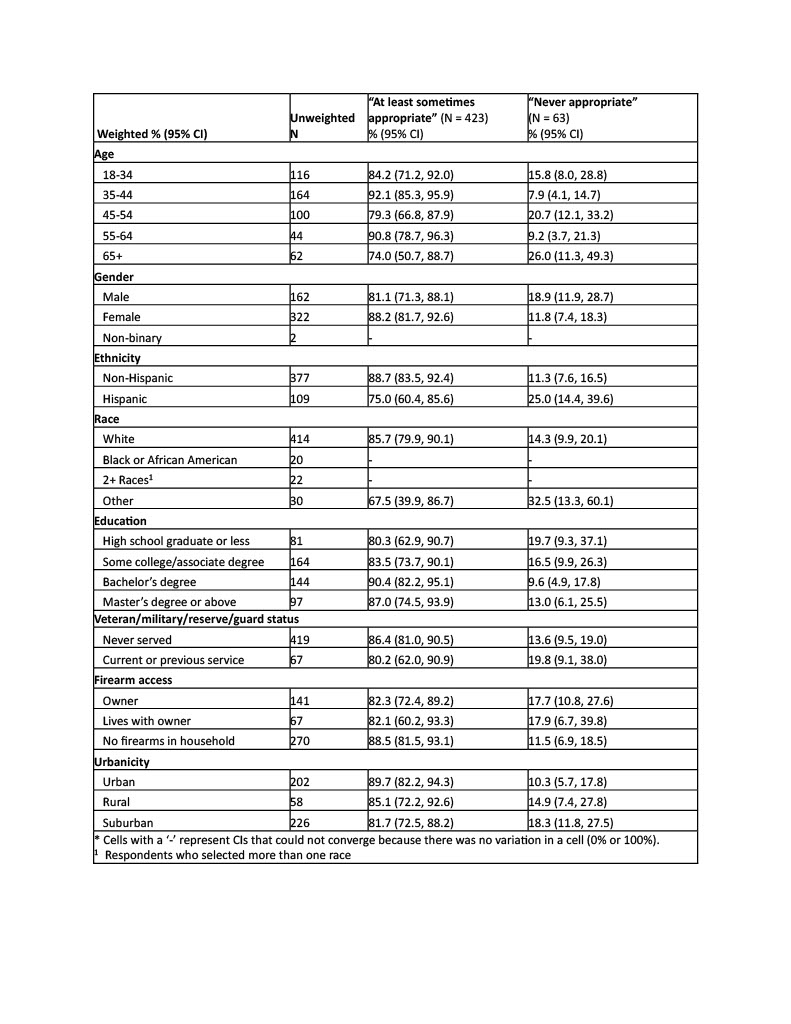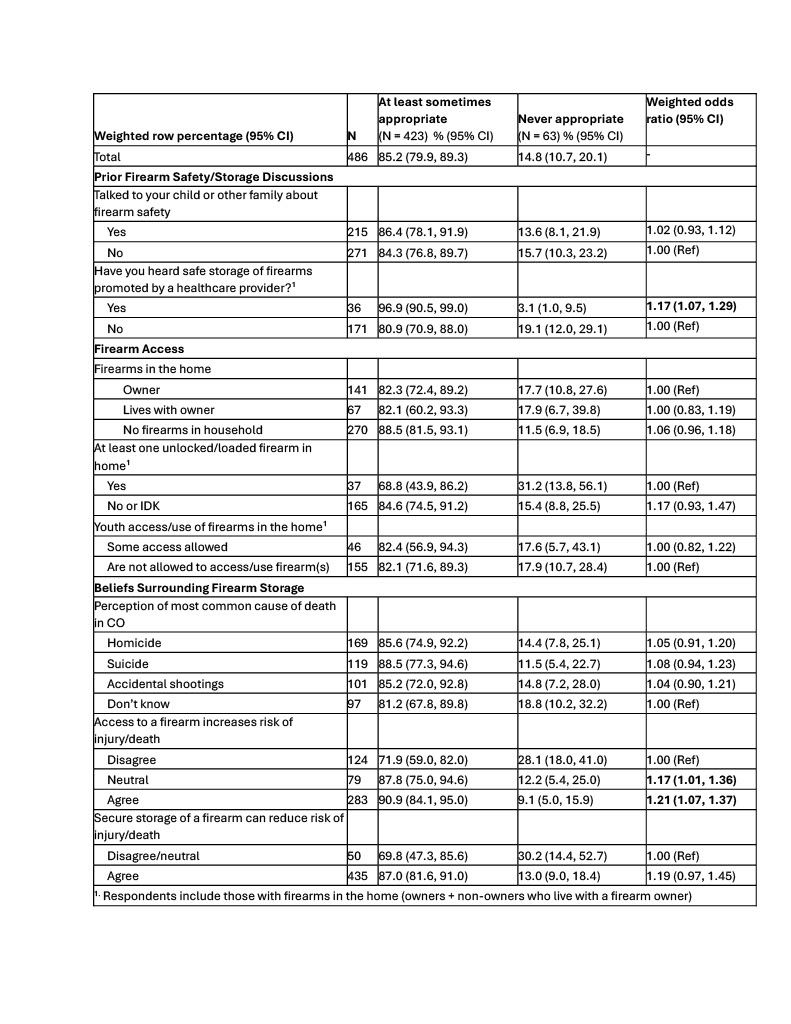Injury Prevention 2
Session: Injury Prevention 2
413 - Caregiver Perceived Appropriateness of Discussing Firearm Storage in the Healthcare Setting: A Cross-Sectional State-Representative Survey
Sunday, April 27, 2025
8:30am - 10:45am HST
Publication Number: 413.4332
Erica K. Sheline, Children's Hospital Colorado, Denver, CO, United States; Erin Wright-Kelly, University of Colorado Anschutz Medical Campus, Aurora, CO, United States; Maya Haasz, University of Colorado School of Medicine, Aurora, CO, United States

Erica K. Sheline, MD (she/her/hers)
Pediatric Emergency Medicine Fellow
Children's Hospital Colorado
Denver, Colorado, United States
Presenting Author(s)
Background: Secure firearm storage decreases risk of youth firearm injury and death. Though healthcare provider (HCP) counseling on firearm storage practices is effective, HCP often do not counsel due to concerns that patients/caregivers will not find the counseling acceptable. Better understanding caregiver receptivity to, and perceptions of, firearm storage counseling may inform HCP willingness to engage caregivers in these discussions.
Objective: The objective of this study was to 1) evaluate caregiver perceived appropriateness of HCPs discussing firearm storage and 2) explore the association between caregiver perceived appropriateness with prior HCP firearm storage counseling, beliefs surrounding safe storage, and current firearm access.
Design/Methods: This study used data from the 2023 Colorado Firearm Injury Prevention Survey. There were 1,520 Colorado respondents; data were weighted to be state-representative. Participants included only adults with children “living, visiting, or staying in the home”. Exposures included prior HCP counseling, beliefs surrounding safe storage, and current firearm access. Caregiver perceived appropriateness of HCPs discussing firearm storage, the primary outcome, was dichotomized as at least sometimes (always, usually, or sometimes appropriate) versus never appropriate in response to, “In general, how often is it appropriate for doctors and healthcare professionals to talk to their patients (or their patients’ parents/guardians) about how firearms are stored?”. Weighted 95% confidence intervals (CI) and odds ratios (OR) were calculated using weighted logistic regression models.
Results: Of 486 caregivers, 423 (85.2%; 95% CI: 79.9-89.3%) reported it was at least sometimes appropriate for HCPs to discuss firearm storage and 63 (14.8%; 95% CI: 10.7-20.1%) felt it was never appropriate. (Table 1) Prior firearm storage discussion with a HCP was associated with increased odds of perceiving these discussions as at least sometimes appropriate (OR 1.17, 95% CI: 1.07-1.29). Those who believe that access to a firearm increases risk of injury or death were more likely to feel that it is appropriate for HCP to discuss firearm storage (OR 1.21, 95% CI 1.02-1.37). There was no significant difference between perceived appropriateness of HCPs discussing firearm storage by current firearm access (i.e., personal firearm ownership or those who allow youth to access firearms in their home). (Table 2)
Conclusion(s): Our findings demonstrate that most caregivers are receptive to firearm storage discussions, and that previous HCP counseling may increase receptivity to future discussions.
Table 1
 Demographic information with weighted percentages and 95% confidence intervals among caregivers who believe it is at least sometimes appropriate (always, usually, or sometimes appropriate) versus never appropriate for healthcare providers to discuss safe firearm storage.
Demographic information with weighted percentages and 95% confidence intervals among caregivers who believe it is at least sometimes appropriate (always, usually, or sometimes appropriate) versus never appropriate for healthcare providers to discuss safe firearm storage.Table 2
 Prior firearm storage discussions, current firearm access, and beliefs surrounding firearm storage among caregivers who believe it is at least sometimes appropriate (always, usually, or sometimes appropriate) versus never appropriate for healthcare providers to discuss safe firearm storage.
Prior firearm storage discussions, current firearm access, and beliefs surrounding firearm storage among caregivers who believe it is at least sometimes appropriate (always, usually, or sometimes appropriate) versus never appropriate for healthcare providers to discuss safe firearm storage.
